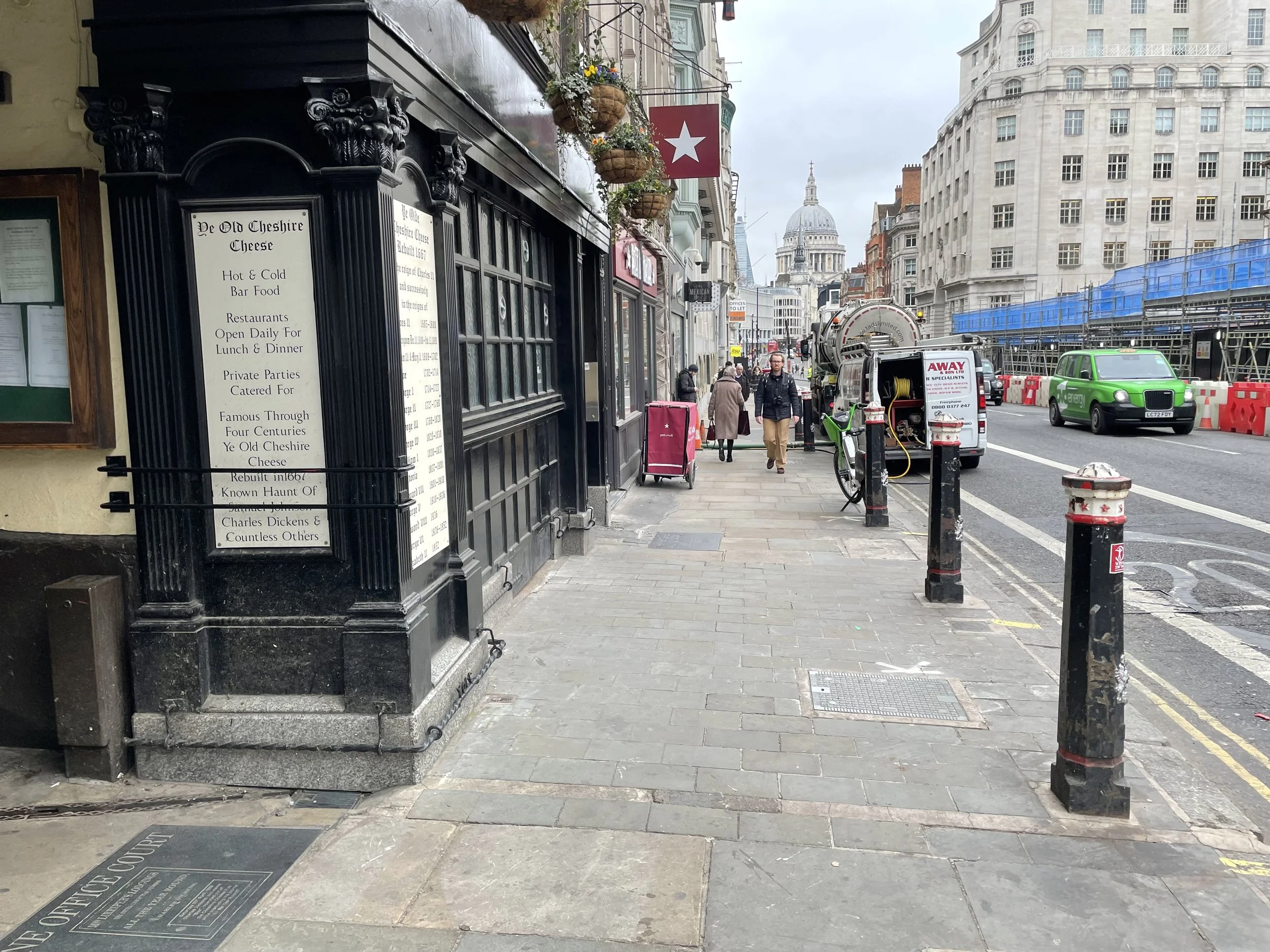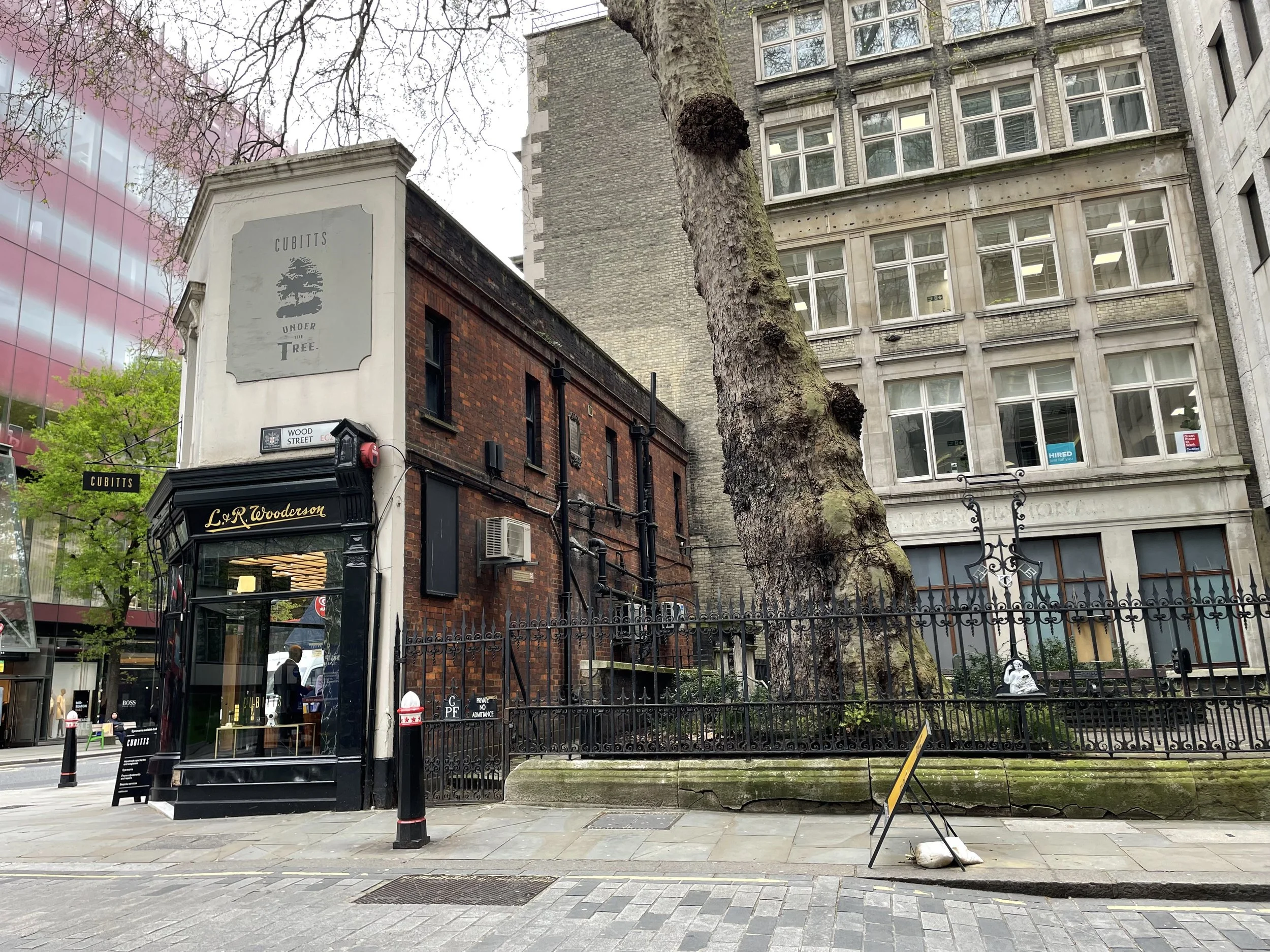Charles Dickens and the City of London
Nobody captured London like Charles Dickens. He was famous for his long walks through London's streets, and immersed himself in the vibrant life of the city, drawing characters, settings, and stories from his observations. As London’s historic and financial heart, the City featured widely in Dickens’ life and novels. Here’s where to walk in his footsteps in the Square Mile today.
1. Lombard Street
The hanging signs of Lombard Street
Lombard Street, the historic banking centre of the City of London, was a significant place in Dickens' life. His first love, Maria Beadnell, lived here, but when she moved awqy the young Dickens was heartbroken. He haunted Lombard Street afterwards, pining for his lost love.
2. The George and Vulture
The George and Vulture
The George and Vulture, a historic inn located in Lombard Court, appears in The Pickwick Papers – it’s where Mr Pickwick stays during his court battle with his former landlady. Dickens himself was known to dine here, and it still hosts the Pickwick Club today.
3. St. Paul's Cathedral
St. Paul’s Cathedral, seen from Reflection Pond
St. Paul's Cathedral, an iconic landmark of London, appears in several of Dickens' novels. David Copperfield visits the cathedral, and Pip glimpses it rising above Newgate on his arrival in London in Great Expectations. The cathedral would have looked very different in Dickens’ day – it was dark grey in colour thanks to the pollution of the Victorian era.
4. The Old Bailey
The Old Bailey, on the site of Newgate Prison
Newgate Prison, notorious for its harsh conditions, appears in several Dickens novels, including Barnaby Rudge and Oliver Twist. Dickens' father was incarcerated in a debtor's prison, which profoundly affected his writing about the penal system and justice.
5. Fleet Street
Outside Ye Olde Cheshire Cheese on Fleet Street
Perfectly positioned between the financial district and St. Paul’s to the east, and the Houses of Parliament to the west, Fleet Street was the centre of British journalism for centuries. Dickens worked as a reporter and editor here (and enjoyed a drink or two in Ye Olde Cheshire Cheese), and his experiences in Fleet Street permeated his novels.
6. Chancery Lane
Lincoln’s Inn, just outside the Square Mile
Chancery Lane is central to the plot of Bleak House with its intricate legal battles and the infamous Jarndyce and Jarndyce case. Dickens’ descriptions of Chancery Lane and the Old Hall at Lincoln’s Inn, where the opening scene is set, reflect his critical view of the convoluted legal system.
7. Wood Street
On the corner of Wood Street and Cheapside
On the corner of Wood Street and Cheapside stood an inn called the Cross Keys. It’s where Pip arrives in London in Great Expectations, and later on the scene of an excruciating tea with Estella.
Follow Dickens through the City of London on a guided walking tour
Dickens immortalised the City of London in his novels, and much of the Square Mile still feels pretty Dickensian today. His legacy lives on in these streets, allowing us to walk in his footsteps and see the city through his eyes.
Looking to explore the City of London that Charles Dickens knew? Get in touch to find out about Dickens-themed walking tours or request a private booking.







